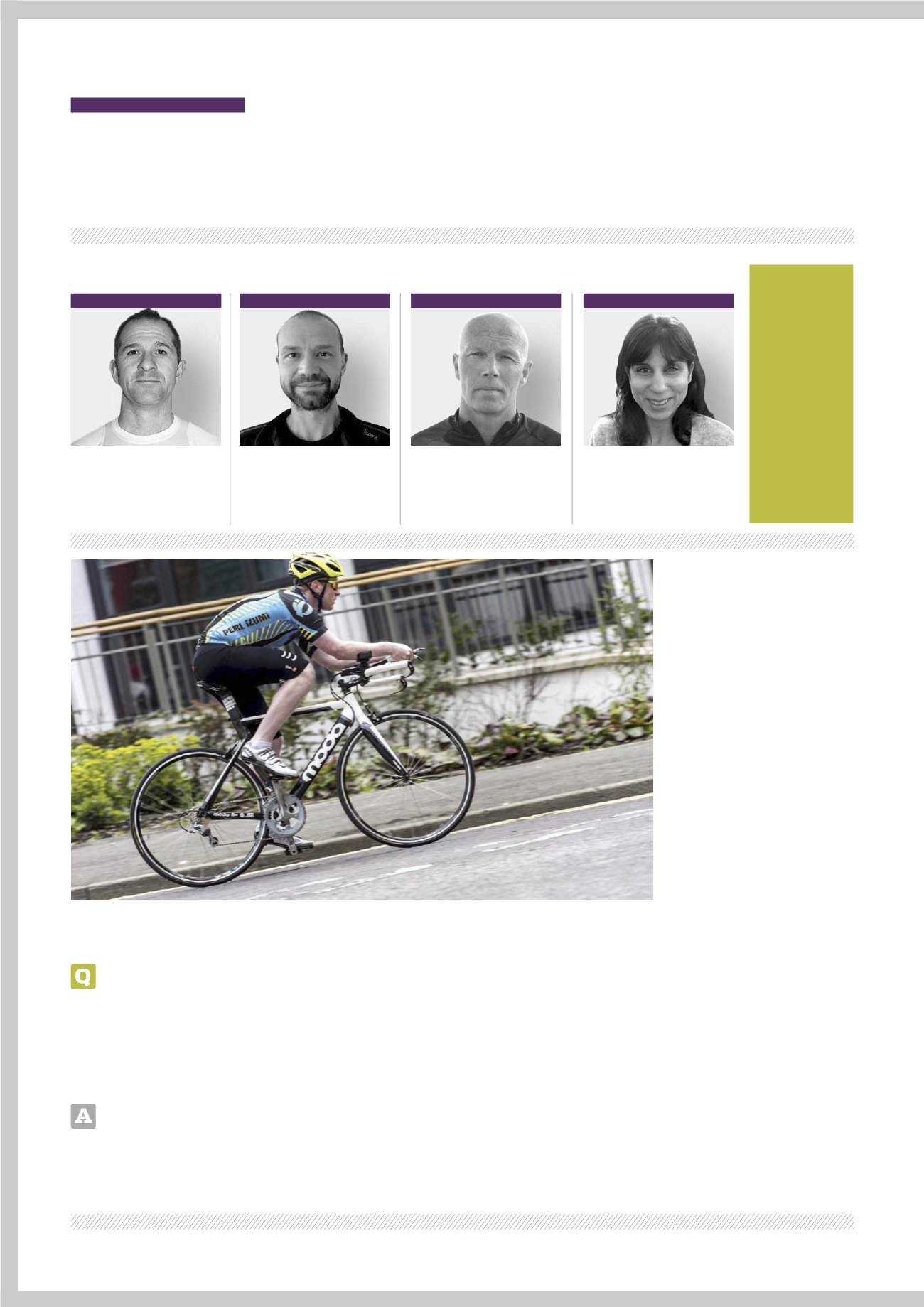

TRI CLINIC
106
I
WWW.220TRIATHLON.COMI
FEBRUARY 2017
PERFORMANCE
Involved in triathlon for 25 years,
qualified remedial massage and
anatomy specialist
KEVIN JAMES
works as a sports therapist with both
age-groupers and elites, including
the GB Triathlon Team.
INJURY
Freelance writer
NIK COOK
is
an experienced competitive
multisporter who has run the
Marathon des Sables, won the
2010 6633 Arctic Ultra and
competed for Team GB in duathlon.
BIKE CARE
RENEE MCGREGOR
is a registered
dietician and sports nutritionist,
and author of the bestselling book
Training Food
. She works with elite
competitors and athletes across
various sports.
MARK KLEANTHOUS
is an athlete
and coach who has completed
more than 460 triathlons, including
38 Ironman events, plus many
other races including the Marathon
des Sables.
BIKE CHOICE
YOUR QUESTIONS ANSWERED
THISMONTH:
TT vs road
››
Bike cleaning
››
Quad pain
››
Fat vs carbs
››
Tri clubs
NUTRITION
MEET OUR EXPERTS
HERE TO ANSWER YOUR QUESTIONS
SENDUSYOUR
QUESTIONS…
If you have a triathlon
query, send us your
question and we’ll try
to answer it in the next
available issue of
220
Triathlon
.
Include as
much relevant info as
you can.
Email to:
triclinic@
220triathlon.com
Or send to:
220 Triathlon
,
Immediate Media,
9th Floor, Tower
House, Fairfax Street,
Bristol BS1 3BN
The aero advantages of a tri bike are
negligable when climbing but, if you
can, do a test ride to check its suitability
I’m targeting my first
Ironman this coming July
on a fairly hilly course. Should I
stick to a road bike or change to
a tri bike? I’ll only be able to
purchase a tri bike six months
before the event.
PAUL GALLAGHER, EMAIL
Firstly, you need to consider if
a triathlon bike is suitable for
you on the specific Ironman course
you’re racing.
The majority of pro triathletes
find that time-trial bikes are difficult
to handle due to the geometry, but
they nearly always choose one
because the positives far outweigh
the negatives, by limiting their
weaknesses to allow them to go
faster over 180km compared to a
road bike. There are advantages
and disadvantages to using a tri
bike, which vary depending on what
type of rider you are.
When cycling uphill you’ll benefit
from a lighter road bike, as the
geometry allows you a more
comfortable and efficient ride. The
aerodynamic advantages of a tri
bike are negligible when climbing
and you may be forced to utilise the
quadriceps more, which can hinder
your run performance. A time-trial
bike is more aerodynamic but you
will be in a more uncomfortable
position, which puts considerable
pressure on your neck, shoulders,
arms and groin, and although you
may get used to this position it can
still result in discomfort.
If you struggle on the hills and
don’t have solid descending skills
then I’d almost always recommend
a road bike. The only exception is if
you’re a particularly strong cyclist
on the flats with otherwise fairly
good bike handling skills.
A tri bike will generally be 1-2.5kg
heavier than a road bike, so if your
Ironman bike route is hilly then
use your roadie, because the extra
weight of a tri bike may take a lot
more out of you for the marathon.
Another thing to consider is
gastro-intestinal issues: ask any of
the best iron-distance triathletes
and coaches what’s the hardest and
most challenging bike workout that
can lead to digestive problems, they
will almost always tell you it’s a long
ride in the TT position.
For gradients of less than 4%,
the aerodynamic benefits can
outweigh the disadvantages of the
extra weight on a tri bike. See if
you can go for a test ride on a tri
bike before buying, and decide if
it’s right for you. If you’re still
undecided then I recommend you
check out your Ironman course on
both bikes. If this isn’t possible
then ride over similar terrain, and
observe how much you gain or
lose on each bike. If you’re serious
about the race and want to
improve thereafter rather than
just complete it, I’d recommend
buying a tri bike.
Most triathletes benefit from
using a tri bike, providing they’re
properly fitted, complete key,
long bike sessions on it and
practise running off it straight
after riding. Do your research
and consider the area where you
train, and make sure you choose
the correct frame size and get a
good bike fit.
MK
WHICHBIKE ISBEST?
IMAGES
AS DESIGN, GETTY IMAGES

















